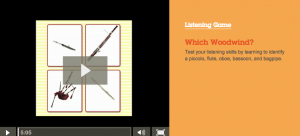 Listening to and identifying sounds is the earliest phonological awareness skill and one of the most important pre-literacy competencies. Without this skill, there will be no progress toward phonics, spelling, or text comprehension.
Listening to and identifying sounds is the earliest phonological awareness skill and one of the most important pre-literacy competencies. Without this skill, there will be no progress toward phonics, spelling, or text comprehension.
How Children Become Phonologically Aware
Children become phonologically aware in a specific developmental sequence, beginning with the larger sound units (e.g., tapping each word in a sentence), then focusing on parts of individual words (e.g., blending two words to make a compound word, such as cup-cake), and finally focusing on smaller sound units (/b/-/ig/) within words.
This developmental sequence is universal…meaning that children who are English language learners are able to transfer phonological awareness skills from their first language, even when the two languages are very different! And children who speak other alphabetic languages also progress through the same sound-awareness sequence, from larger to smaller units.
Kindermusik@Home Activity that Supports Phonological Awareness
There is such a thing as training an ear. Parents can extend the application of a listening activity like this one from Kindermusik@Home to pre-literacy by gathering a variety of sound-making materials and playing with different pitches, paces, and lengths of sound. The more experience children gain in learning to identify the subtle nuances between musical timbres and pitches, the more prepared they will be to recognize and identify the distinct sounds within words.
Kindermusik@Home activity: “Which Woodwind?” Give young children’s listening skills a workout with this fun, musical game. Kids will learn to identify a piccolo, flute, oboe, bassoon, and bagpipe.
